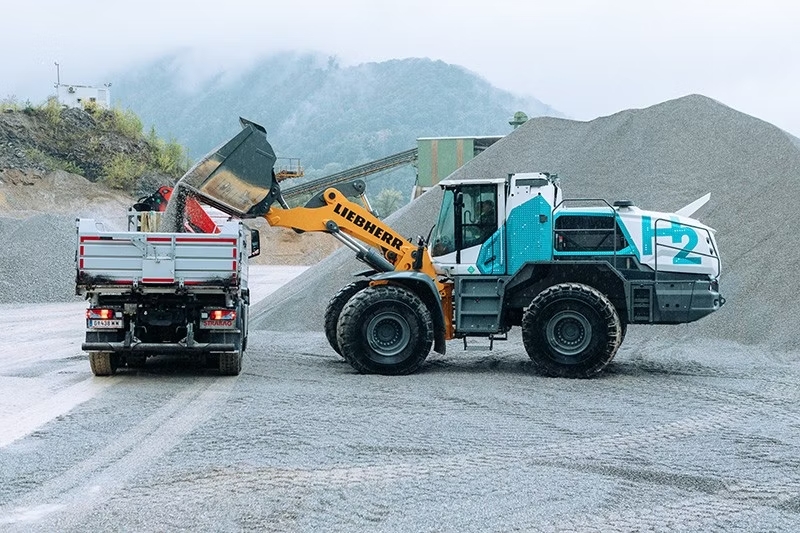Most major manufacturers of construction site equipment are continuing to extend their product ranges and now offer increasingly large EV and hydrogen-powered vehicles, despite in North American and European markets during 2024.
For example, Volvo displayed its market-ready at its Volvo Days North America event in Shippensburg, Pa., this past September after two years of jobsite testing.
With a breakout force of 33,500 pound-feet, a digging reach exceeding 32 feet and maximum digging depth of over 22 feet, the EC230 matches the capacities of VolvoŌĆÖs EC220, its diesel-powered equivalent. An important consideration when it comes to EV equipment, the EC230 has an estimated ŌĆ£indicative runtimeŌĆØ as long as five hours.
Earlier in August, American manufacturer Case released the 580EV, what the company is the worldŌĆÖs first electric backhoe.
Directed towards work on urban locations where clean power and reduced noise are important considerations, the four-wheel drive 580EV can deliver between four to eight hours per charge of work from its 400-volt, 71-kilowatt-hour lithium-ion battery system.
Battery life continues to be a discussion point surrounding the next generation of heavy site equipment, with companies all promoting longer run times. For example, HeviŌĆÖs H65L all-electric loader a full nine hour day of work without recharging.

In contrast, Komatsu is offering an interesting alternate to its diesel-guzzling heavy equipment with its PC8000-11 surface mining excavator. Instead of the fumes emitted from an hourly burn rate of 400 litres per hour, there are zero emissions due to the use of heavy electrical cords instead of batteries.
The downside is that while a power cable connection allows the performance and size of electric equipment to increase, it also requires nearby accessibility to a continuous power source, something not always available on construction sites.
Over recent years, the cost premium for battery-powered site equipment has been an issue restricting wider EV adoption, paralleling the consumer vehicle experience.
Happily, a published by researcher Mathilde Carlier suggests the cost of batteries, as an overall percentage of equipment cost, will drop significantly over the next five years from 28 per cent in 2024 to only 19 per cent in 2030. In the shorter term, a from Goldman Sachs suggests battery pack prices will have fallen 40 per cent from 2022 to the end of 2025. These projections will strengthen the economic arguments for all-electric power plants.
Meanwhile, hydrogen is making an impact in the heavy equipment industry. Hydrogen can be combusted to deliver power in much the same way as a diesel engine. Existing diesel power plants have the potential to be refitted for hydrogen. Alternately, hydrogen can be used as a fuel cell to create electricity.
At a trade event in Bischofshofen, Austria, European manufacturer Liebherr debuted and demonstrated what it is ŌĆ£the worldŌĆÖs first prototype large with a hydrogen engine.ŌĆØ
The L566H answers the need for larger machines with high energy requirements. The zero GHG emissions hydrogen-powered reciprocating piston engine has interfaces that are comparable to those of a diesel engine, both thermally and mechanically.
British equipment manufacturer JCB has a big jump on competitors, given its commitment to hydrogen power made a few years ago. Although the company builds both ICE and EV site equipment, it has presented its t in a straight-forward manner.
ŌĆ£Batteries are not practical for equipment with high power demands, and for machines that work in remote locations, such as backhoe loaders and large excavators,ŌĆØ it says. ŌĆ£Batteries would weigh too much, cost too much and there would not be enough time to charge them, even if onsite charging infrastructure was in place.ŌĆØ
With other leading manufacturers like Caterpillar and Hyundai in the hydrogen game as well, it begs the question, ŌĆ£Is diesel dead?ŌĆØ
Site equipment investment is a long-term commitment. However, with the world leaning towards a zero-emissions future, some feel diesel power will have run its course by 2040.
John Bleasby is a freelance writer. Send comments and Inside Innovation column ideas to editor@dailycommercialnews.com.





Recent Comments
comments for this post are closed